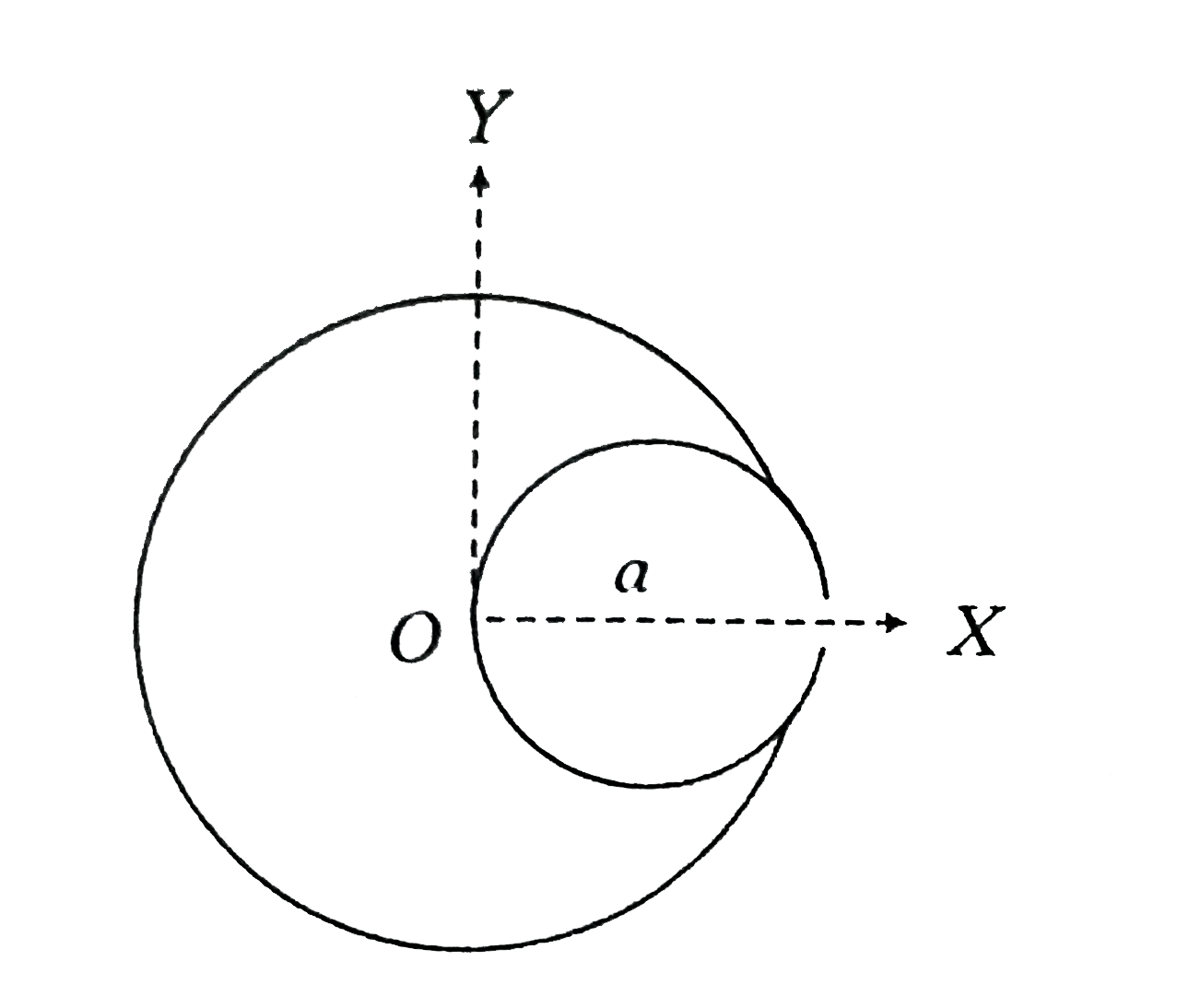A uniform circular disc has a radius of 20cm. A circular disc of radius 10cm is cut concentrically from the original disc. The shift in centre of mass is
zero
The correct Answer is:D
To find the shift in the center of mass when a smaller disc is cut from a larger disc, we can follow these steps:
1. Identify the Dimensions:
- The radius of the original disc (R) = 20 cm.
- The radius of the cut-out disc (r) = 10 cm.
2. Calculate the Area of Both Discs:
- Area of the original disc (A1) = πR² = π(20 cm)² = 400π cm².
- Area of the cut-out disc (A2) = πr² = π(10 cm)² = 100π cm².
3. Determine the Mass of Each Disc:
- Assuming uniform density (ρ), the mass of the original disc (M1) is proportional to its area:
M1 = ρ * A1 = ρ * 400π.
- The mass of the cut-out disc (M2) is:
M2 = ρ * A2 = ρ * 100π.
4. Calculate the Center of Mass of the Remaining Shape:
- The center of mass of the original disc is at its center (0,0).
- The center of mass of the cut-out disc is also at (0,0) since it is concentric.
- The remaining shape after cutting out the smaller disc is symmetric about the center.
5. Determine the Shift in Center of Mass:
- Since both the original disc and the cut-out disc are symmetric and concentric, the center of mass of the remaining shape does not change.
- Therefore, the shift in the center of mass is zero.
6. Conclusion:
- The shift in the center of mass after cutting out the smaller disc is 0 cm.
Final Answer:
The shift in the center of mass is 0 cm.
---
- The radius of the original disc (R) = 20 cm.
- The radius of the cut-out disc (r) = 10 cm.
- Area of the original disc (A1) = πR² = π(20 cm)² = 400π cm².
- Area of the cut-out disc (A2) = πr² = π(10 cm)² = 100π cm².
- Assuming uniform density (ρ), the mass of the original disc (M1) is proportional to its area:
M1 = ρ * A1 = ρ * 400π.
- The mass of the cut-out disc (M2) is:
M2 = ρ * A2 = ρ * 100π.
- The center of mass of the original disc is at its center (0,0).
- The center of mass of the cut-out disc is also at (0,0) since it is concentric.
- The remaining shape after cutting out the smaller disc is symmetric about the center.
- Since both the original disc and the cut-out disc are symmetric and concentric, the center of mass of the remaining shape does not change.
- Therefore, the shift in the center of mass is zero.
- The shift in the center of mass after cutting out the smaller disc is 0 cm.
The shift in the center of mass is 0 cm.
Similar Questions
Knowledge Check
- Question 1 - Select One
What is the circumference of a circular disc of radius 14 cm?
A88 cmB44 cmC22 cmD11 cm
A small disc of radius 2cm is cut from a disc of radius 6cm. If the distance their centers is 3.2cm, what is the shift in the center of mass of the disc?
View SolutionA circular disc of radius R is removed from a bigger circular disc of radius 2R such that the circumferences of the discs coincide. The center of mass of new disc is αR from the center of the bigger disc. The value of α is
View SolutionFrom a uniform disc of radius R, a circular section of radius R/2 is cut out. The centre of the hole is at R/2 from the centre of the original disc. Locate the centre of mass of the resulting flat body.
View SolutionFrom a uniform circular disc of mass M and radius R a small circular disc of radius R/2 is removed in such a way that both have a common tangent. Find the distance of centre of mass of remaining part from the centre of original disc.
View SolutionA uniform circular disc of radius R and weight 90 N is shown in figure. If a small circular portion is cut out, then coordinates of new centre of mass will be (Remaining weight of disc is 65 N and y = 3R5)
View SolutionGiven a uniform disc of mass M and radius R. A small disc of radius R/2 is cut from this disc in such a way that the distance between the centres of the two discs is R/2. Find the moment of inertia of the remaining disc about a diameter of the original disc perpendicular to the line connecting the centres of the two discs
View SolutionFind the centre of mass of a uniform disc of radius a from which a circualr section of radius b has been removed. The centre of hole is at a distance c from the centre of the disc.
View Solution


